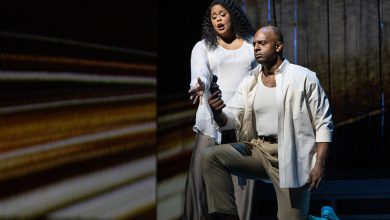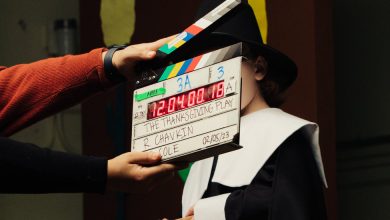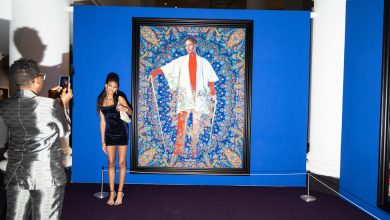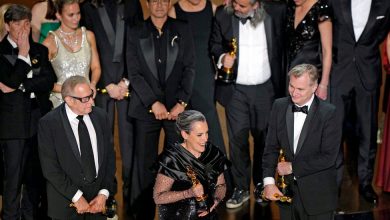At Last Back at Sundance, Filled With Rocky Relationships and Glorious Writers
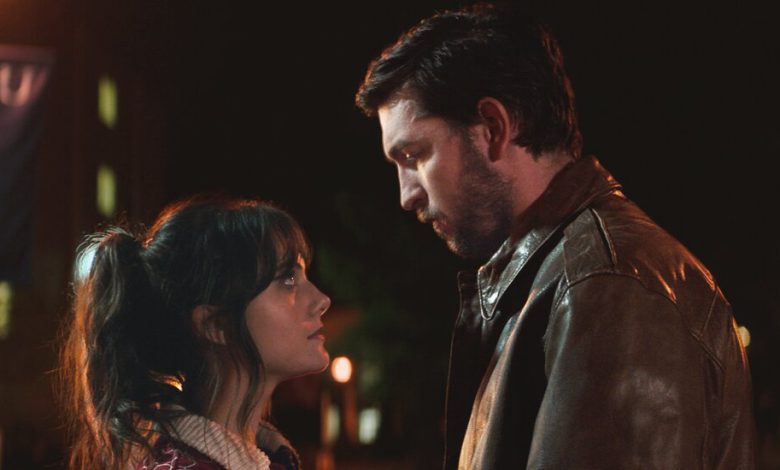
For nearly 40 years, intrepid movie lovers have traveled to Park City, Utah, to partake in that fascinating continuing experiment called the Sundance Film Festival. Having gone virtual in 2021 and 2022 because of the pandemic, the event has resumed in-person screenings to go along with its online offerings. And certainly it’s seemed like business again as usual as thousands of attendees tramped through the snow to watch good and less-so movies, including many that focus on the same ideological debates, political fights, liberation struggles and existential questions attendees face back home. (The festival ends Sunday.)
One of the great, foundational truths about the festival is that it — like its parent organization, the Sundance Institute — remains the pre-eminent showcase for off-Hollywood American movies even as it has retained deep, mutually beneficial ties to the commercial mainstream. That may seem paradoxical, but it’s no more so than the movies themselves, a commercial form that depends on an alchemical combination of art and money, vision and hustle. Sundance is, after all, a talisman for film independence that was founded by a major film star, Robert Redford, in 1981 — the very same year he won the best directing Oscar for “Ordinary People,” his directorial debut about a traumatized upper-middle-class white family.
Whether “Ordinary People” set the mood or not, trauma is an enduring topic at the festival, although broken families are only part of the larger, careful mix at Sundance in any given year, this one included. Democracy and its threats have also been on the agenda for the 2023 edition alongside free speech, sexual identity, reproductive rights, bad men and seriously bad vibes. It’s always dubious to draw zeitgeist-y conclusions amid all the variables, including institutional mandates, programmer taste, back-room politicking and the basic fact that it can be years between a movie’s conception and its premiere. Yet that has rarely stopped any critic and I can confidently assert that, as a culture, we are bummed — but also hopeful!
To judge from some of the hottest, most talked-up titles this year, it seems clear that heterosexual relationships — or at least movies about them — have entered a new and particularly fractious phase. (Romance may not be dead, but it’s no wonder romantic movies, especially comedies, nearly are.) Exhibit No. 1 is “Cat Person,” a slick adaptation of the Kristen Roupenian short story that became a sensation when it was published in The New Yorker in 2017. As in the story, the movie tracks the messy, creepy relationship that develops between a young college student, Margot (Emilia Jones), and an older guy, Robert (Nicholas Braun), after their flirtatious texting takes a sharp turn into sweaty, fleshy reality.
Reality, though, proves tricky, slippery terrain in the screen adaptation, which like several other female-driven festival titles this year (“Eileen,” “Sometimes I Think About Dying”) uses a woman’s fantasies to complicated, at times uneasy effect. In Roupenian’s original story, Margot goes out with Robert but also wonders whether he poses a threat. She sleeps with him; it gets (very) weird. Roupenian artfully, at times comically marshals Margot’s hesitation to create tension and suspense in a story that deals with power, sexual consent, gender norms, the limits of knowledge and that durable narrative theme: female paranoia.
Directed by Susanna Fogel from a script by Michelle Ashford, “Cat Person” changes the original story’s dynamic and blunts its subtleties by visually staging Margot’s hesitations. At one point, for instance, while she and Robert are in his car on their first date, he abruptly starts strangling Margot, only for the scene to cut back to them just awkwardly driving and talking. The filmmakers teasingly play with women’s fears about men — is it all in her head? — and it’s not for nothing that one of the first sounds in “Cat Person” is of a woman screaming, which emanates from a cheesy old trailer playing at the movie theater where Margot works.
The Projectionist Chronicles the Awards Season
The Oscars aren’t until March, but the campaigns have begun. Kyle Buchanan is covering the films, personalities and events along the way.
- Meet the Newer, Bolder Michelle Williams: Why she made the surprising choice to skip the supporting actress category and run for best actress.
- Best-Actress Battle Royal: A banner crop of leading ladies like Michelle Yeoh and Cate Blanchett rule the Oscars’ deepest and most dynamic race.
- ‘Glass Onion’ and Rian Johnson: The director explains why he sold the “Knives Out” franchise to Netflix, and how he feels about its theatrical test.
- A Supporting-Actress Underdog: In “Everything Everywhere All at Once,” don’t discount the pivotal presence of Stephanie Hsu.
Like many indies, “Cat Person” opens stronger than it closes, partly because it uses the spectacle of violence to tie up its loose, provocative ends. That’s also the case with the smoothly seductive “Fair Play,” yet another addition to #MeToo cinema. (It’s been snapped up by Netflix.) Written and directed by Chloe Domont, this effective, slow-boiling drama centers on Emily (Phoebe Dynevor) and Luke (Alden Ehrenreich), whose happiness is undone after she receives a promotion at the brokerage firm where they both work. She becomes his boss and soon they become each other’s adversaries, a breakdown in relations that reaches a punishing climax (for them and for us) with a succession of exceedingly brutal acts.
The stakes are grimmer and considerably more persuasive in “A Thousand and One,” the poignant feature debut of A.V. Rockwell about a young ex-con trying to keep her tiny family together. Set in New York in the mid-1990s, this drama follows Inez (a terrific Teyana Taylor) from jail to Harlem as she struggles to find (and hold onto) an affordable apartment in a fast-changing neighborhood while landing a decent-paying job and rekindling an affair with an old boyfriend. With emotional delicacy and a lightly expressionistic visual style, Rockwell brings both Inez and New York to life, skillfully setting one woman’s hardscrabble personal story against a larger political backdrop. Rockwell is the real deal; keep an eye on her.
Rudolph Giuliani, who was New York’s mayor from 1994 to 2001, makes a splashy, politically charged cameo in both “A Thousand and One” and the documentary “The Stroll.” Directed by Kristen Lovell and Zackary Drucker, “The Stroll” is a diverting, often touching look back at New York’s meatpacking district before it was gentrified into a soulless playground for the wealthy. Long before the days when “Sex and the City,” the luxury emporiums and the Whitney all moved downtown, the area was where transgender prostitutes — including Lovell — fashioned a community while turning tricks, a story that the filmmakers tell with humor, wryness, well-earned tears, some smartly deployed archival material and numerous talking-head interviews.
The documentary sections at Sundance are often where you find some of the festival’s consistently strongest work, and this year was no exception. There’s a natural double bill to be had with “Judy Blume Forever” and “Going to Mars: The Nikki Giovanni Project,” each of which provide insightful, entertaining career overviews of wonderfully scrappy writers. Both “Judy Blume” (directed by Davina Pardo and Leah Wolchok) and “Nikki Giovanni” (Joe Brewster and Michèle Stephenson) track their subjects across their respective event-filled lives as a children’s book author and as a poet, pausing on their career triumphs, revisiting personal milestones and surveying political battles with original interviews, great archival material and some animated flourishes.
Both of these documentaries, like most of the nonfiction work I saw at this year’s Sundance, were more intellectually engaging than formally revelatory, even with their visual flights of fancy. One of the nice things about documentaries, though, is that a movie can grab hold of you simply through the power of its subject. That’s true of “Bad Press,” an absorbing, eye-opening look at the fight for a free and open press in the Muscogee (Creek) Nation directed by Rebecca Landsberry-Baker and Joe Peeler. That’s also the case with “Victim/Suspect,” Nancy Schwartzman’s blood-boiler about a reporter investigating cases in which women who, after reporting their sexual assault to the police, are accused of lying, then arrested and prosecuted.
Despite its popularity and generally positive press, Sundance has often been the target of a certain amount of mockery, both good-natured and meanspirited. Its earlier years are still, fondly and not, branded as its granola period, a characterization that speaks to the kinds of modest, regionally minded movies that the festival often presented. To a degree, some of the gibes also reflected some observers’ feelings about Redford, whose earnestness has long made him a very big and obviously irresistible target (when he’s not dazzling everyone with his stardom). The mockery continued even as Sundance’s imprint on the industry greatly expanded — partly because it expanded. Steven Soderbergh broke there, and so did Dee Rees.
This year, I didn’t hear any jokes about Redford or the experiment in community and storytelling that he created so many years ago. More instructively, I didn’t even hear many complaints about the lineup, which was solid if not exceptional, and chock-full of fine, good and very good movies, most of which will land at your local theater or, more likely, on one of your streaming platforms. After several years of being away from the festival and so much bad and bleak news about the industry, and despite the usual logistic complaints about the festival, I think that a lot of us were simply grateful to be back in Park City, watching movies, discovering talent, finding new ideas and visiting other worlds. I know that I was.

